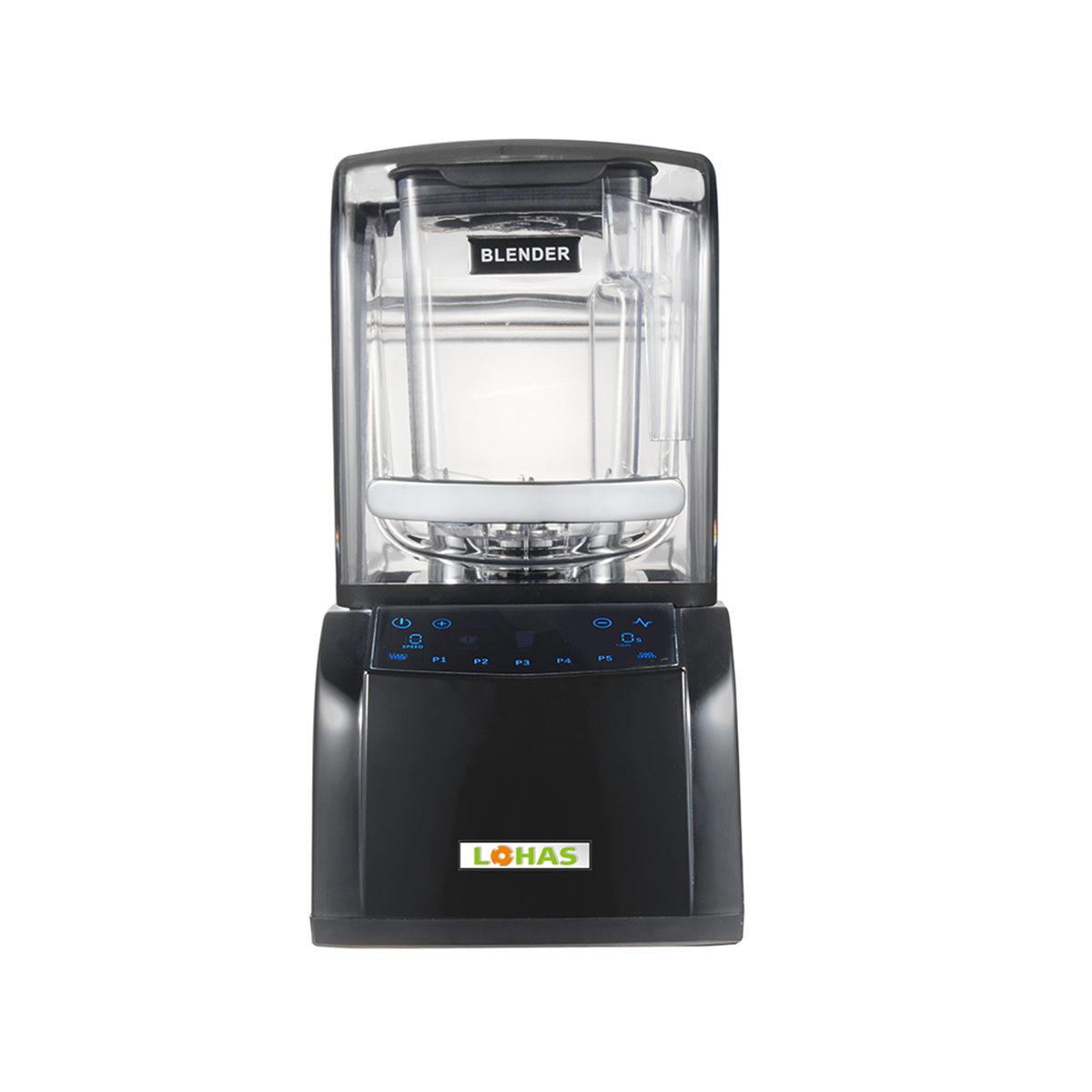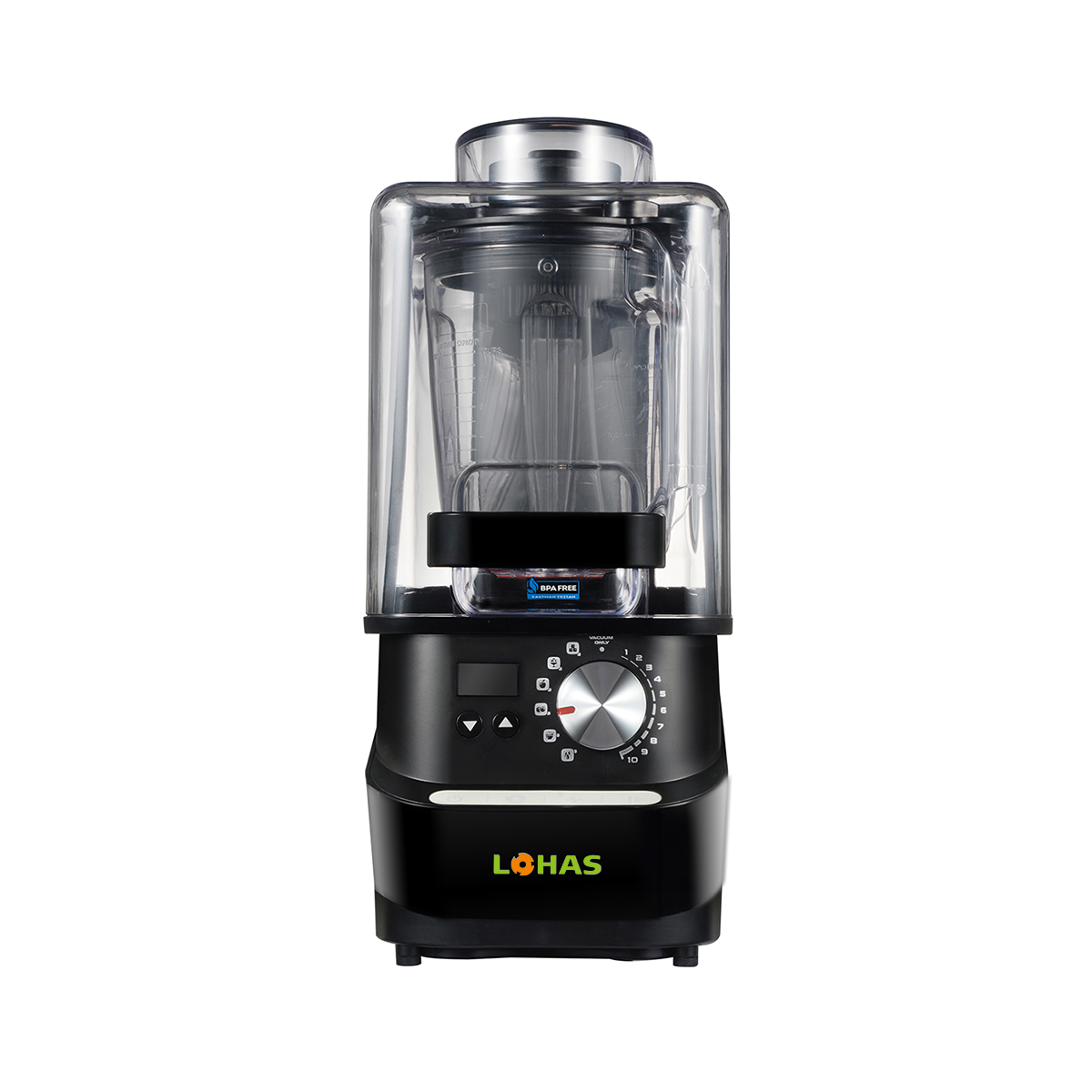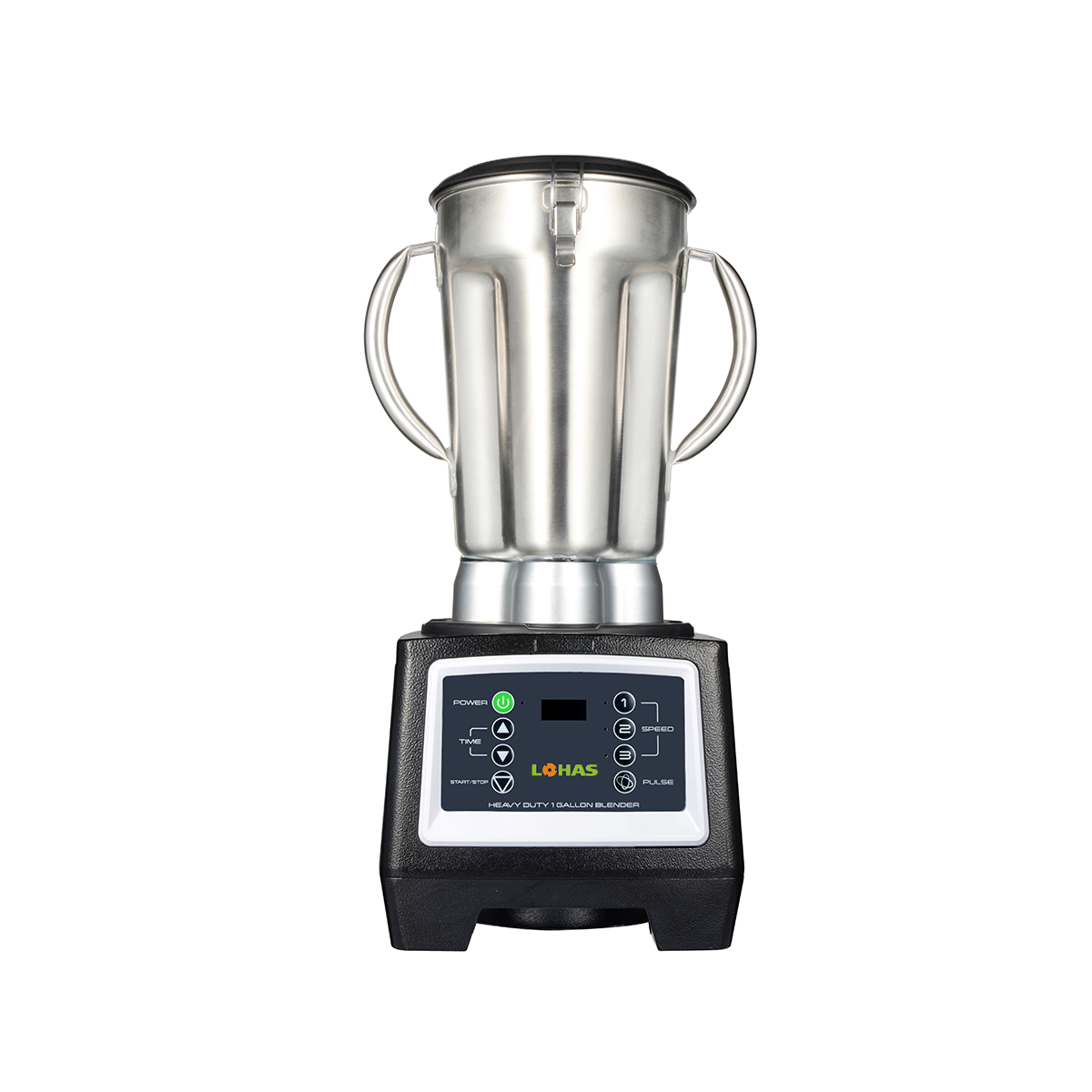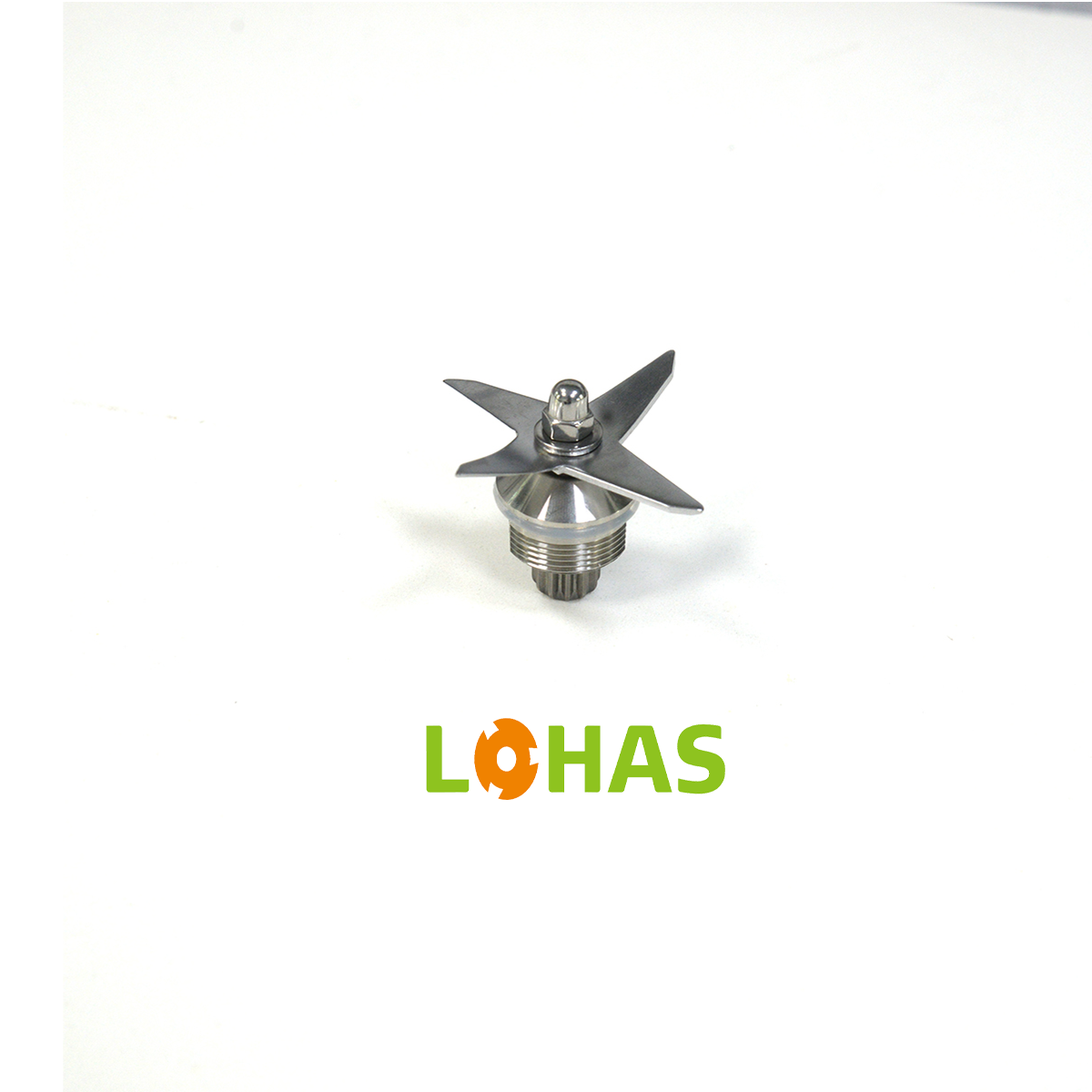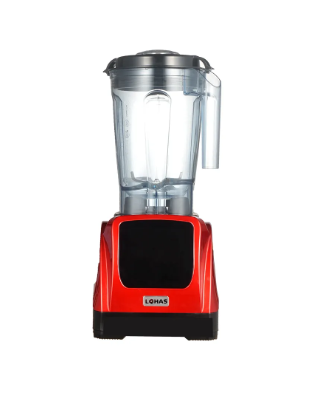Înțelegere Blender automat Mecanică
Cum funcționează blender-ele automate
Blender-ele automate sunt aparate de bucătărie fascinante, acționate de motoare electrice care rotesc lamele la viteze mari pentru a tăia, amesteca și lichida eficient ingrediente. Funcționarea este inițiată prin interfațe prietenoase utilizatorului, cum ar fi butoane sau ecrane tactile. Aceste sisteme facilitează procesul de mixare oferind o gamă de setări de viteză. Utilizatorii pot adapta viteza în funcție de textura și consistența ingredientelor implicate, permițând crearea unor preparate de la frappé-uri cremoase la salsas cu bucăți. Modelele avansate de blender oferă în plus setări programabile pentru sarcini culinare specifice. De exemplu, atunci când se pregătesc smoothuri, supe sau sosuri, aceste setări ajustează automat timpul și viteza de mixare pentru a asigura rezultate optime.
Componente cheie și funcțiile lor
Înțelegerea componentelor cheie ale blender automat motorul poate îmbunătăți semnificativ experiența utilizatorului. Motorul este inima blenderului, având de obicei între 300 și 1.500 de wați. Această diversitate în ceea ce privește puterea influențează direct capacitatea blenderului de a procesa ingrediente dificile, cum ar fi nucile și gheața. Lamele, adesea realizate din oțel inoxidabil, sunt ingenios concepute pentru a tăia și amesteca fără efort, menținându-și ascuțimea și rezistența la coroziune în timp. Completing these components is the jar, available in different materials such as glass, plastic, and stainless steel. Each material offers unique benefits: glass is durable and resistant to heat, plastic is lightweight, and stainless steel combines strength with a sleek look.
Prin înțelegerea acestor componente, utilizatorii pot lua decizii informate atunci când achiziționează blenderuri care să le satisfacă cel mai bine nevoile culinare, asigurându-se că fiecare sesiune de mixare este eficientă și plăcută.
Probleme comune ale blenderelor automate
Supraîncălzirea motorului în timpul utilizării
Supraîncălzirea motorului este o problemă frecventă întâmpinată de mulți utilizatori ai blenderelor automate. Această problemă apare adesea din cauza perioadelor lungi de utilizare, în special atunci când blenderul trebuie să proceseze ingrediente dure sau fibroase. O astfel de activitate prelungită poate duce la oprirea termică, o caracteristică de siguranță integrată concepută pentru a preveni deteriorarea permanentă a aparatului. Pentru a remedia această situație, este esențial să permiteți o circulație adecvată a aerului în jurul motorului și să evitați suprasolicitarea blenderului, ajutând astfel la menținerea temperaturilor în limite sigure.
Scăpări în jurul bazei blenderului
Pierderea de lichid în jurul bazei blenderului este o altă problemă frecventă, cauzată în mod obișnuit de garnituri și etanșări uzate. Aceste componente sunt esențiale pentru menținerea unei fixări sigure între borcan și bază. Verificarea periodică și înlocuirea etanșărilor deteriorate vor preveni scurgerile. De asemenea, este recomandabil să curățați complet reziduurile, deoarece acestea pot contribui la uzura în timp. Asamblarea corectă este esențială, deoarece manipularea necorespunzătoare în timpul instalării poate provoca scurgeri, subminând eficacitatea blenderului și făcându-l mai puțin fiabil.
Blocarea paletei sau performanță slabă
Blocarea lamelei poate împiedica în mod semnificativ performanța unui blender automat. Această problemă indică adesea faptul că ingredientele utilizate sunt fie prea moi, fie prea dense, ceea ce poate împiedica lamele să funcționeze optim. Verificările regulate ale întreținerii pentru a se asigura că lamele rămân ascuțite și libere de resturi de alimente sunt esențiale pentru îmbunătățirea eficacității generale a blenderului. În plus, utilizarea funcției de puls poate ajuta la desprinderea ingredientelor blocate, promovând o consistență mai bună a amestecării și prelungind durata de viață a blenderului.
Întreruperi ale alimentării cu energie
Întreruperile ale alimentării cu energie pot afecta funcționalitatea unui blender automat , iar adesea sunt cauzate de cabluri defecte sau probleme la priză. Este important să inspectați cu atenție instalația electrică pentru a identifica și remedia astfel de probleme. Utilizarea unui protector contra supratensiunilor poate oferi un nivel suplimentar de protecție împotriva fluctuațiilor electrice, care sunt o cauză frecventă a defecțiunilor blenderelor. Dacă în timpul funcționării se aud zgomote neobișnuite, acest lucru poate indica o problemă de alimentare, necesitând o atenție imediată și investigații pentru a preveni complicații ulterioare.
Soluții pas cu pas pentru probleme persistente
Rezolvarea supraîncălzirii motorului
Pentru a remedia supraîncălzirea, este esențial să opriți imediat și să deconectați blenderul, permițându-i să se răcească înainte de o utilizare ulterioară. Acest lucru previne declanșarea oprirei termice, protejând motorul de deteriorări permanente. Luați în considerare reducerea timpilor de mixare și împărțirea cantităților mari în porții mai mici pentru a minimiza efortul asupra motorului. În plus, curățarea regulată a ventilatorilor și asigurarea unui flux de aer neobstrucționat pot ajuta la prevenirea supraîncălzirii și menținerea unei performanțe optime.
Repararea scurgerilor de etanșare în vas
Repararea scurgerilor de etanșare implică o inspecție atentă a vasului pentru a verifica existența crăpăturilor sau a etanșărilor uzate; luați în considerare înlocuirea acestora dacă sunt deteriorate. Pentru crăpături minore, utilizarea siliconului sigur pentru alimente poate etanșa temporar acestea, oferind o soluție pe termen scurt până la aplicarea unei reparații permanente. Asigurarea alinierii corecte a vasului în timpul asamblării este esențială pentru prevenirea scurgerilor și menținerea unei fixări strânse.
Deblocarea în siguranță a palelor blocate
Deblocarea sigură a lamelelor blocate începe cu deconectarea dispozitivului și eliminarea recipientului pentru a avea acces la lame fără riscul de rănire. Utilizarea unei spatule pentru a elibera ușor ingredientele blocate rezolvă adesea problema fără a deteriora lamele, permițând o funcționare optimă. În cazurile în care ingredientele blochează grav lamele, este posibil să fie necesară demontarea ansamblului de lame pentru a elimina eficient blocajele.
Depanarea defecțiunilor electrice
Când depanați defecțiunile electrice, începeți prin verificarea cablului de alimentare și a fișei pentru deteriorări vizibile, înlocuindu-le dacă este necesar pentru a restabili funcționalitatea. Asigurați-vă că este o conexiune corectă la priză și testați cu un alt aparat pentru a exclude probleme ale prizei. Dacă problemele persistă, este recomandabil să consultați un electrician autorizat sau un tehnician pentru a evalua cablajul intern și a asigura o funcționare sigură și fiabilă a blenderului.
Sfaturi de întreținere preventivă
Practici de curățenie și lubrificare optimale
Menținerea unui blender curat și bine uns este esențială pentru longevitatea și performanța acestuia. După fiecare utilizare, este crucial să demontați componentele blenderului și să le spălați cu apă călduță și săpun pentru a elimina resturile de alimente și a preveni înmulțirea bacteriilor. În plus, ungerea pieselor motorului conform recomandărilor producătorului poate preveni uzura, asigurând o funcționare lină. Pentru petele persistente sau mirosurile neplăcute, o combinație de oțet și bicarbonat de sodiu poate fi eficientă în curățare, ajutând la păstrarea aspectului estetic și a igienei blenderului.
Verificări regulate ale palelor și garniturilor
Inspecțiile regulate ale lamei și ale garniturilor sunt esențiale pentru menținerea eficienței blenderului și pentru prevenirea unor probleme precum scurgerile sau lama toblinde. Este important să verificați periodic lama pentru semne de uzură sau deteriorare și să o înlocuiți atunci când este necesar, pentru a asigura o performanță optimă la mixat. În mod similar, garniturile trebuie verificate privind potrivirea corectă și uzura; înlocuirea lor regulată poate preveni scurgerile și poate îmbunătăți eficiența amestecării. Păstrarea unui jurnal al activităților de întreținere vă poate ajuta să urmăriți modelele de utilizare și să anticipați momentul în care ar putea fi necesare înlocuiri, asigurând astfel o funcționare constantă a blenderului.
Când să solicitați reparații profesionale
Identificarea deteriorării ireparabile a motorului
Recunoașterea semnelor de deteriorare ireparabilă a motorului este esențială pentru a determina momentul în care este necesară o reparație profesională. Indicatorii principali includ sunete neobișnuite provenite din motor, apariția de fum sau incapacitatea completă de a porni. Aceste simptome indică adesea probleme grave care necesită o evaluare specializată. Este important să înțelegeți opțiunile de garanție, care pot ajuta la acoperirea costurilor de reparație atunci când sunt implicate componente defecte. Stabilirea unei relații cu un serviciu autorizat de reparații asigură evaluări mai rapide și mai eficiente în cazul apariției acestor probleme în viitor. Fiind proactivi, putem menține funcționalitatea blenderelor noastre și putem preveni deteriorări suplimentare.
Considerente legate de garanție pentru reparații
Înainte de a solicita reparații, este esențial să verificați documentația garanției pentru a vă asigura că reparațiile nu vor anula orice acoperire rămasă. Solicitarea unor servicii profesionale pentru reparații în perioada de garanție poate fi adesea efectuată fără costuri suplimentare, protejând astfel investiția noastră. Înțelegerea termenilor garanției ne permite să gestionăm așteptările și să planificăm eficient costurile viitoare de întreținere. Atunci când folosim serviciile de garanție, este benefic să clarificăm ce este acoperit și ce nu, oferind liniște sufletească și o orientare clară privind cheltuielile potențiale. Astfel, o abordare proactivă a considerentelor legate de garanție poate simplifica gestionarea reparațiilor și poate menține performanța blenderului.
Secțiunea FAQ
Ce ar trebui să fac dacă motorul blenderului meu se supraîncălzește frecvent?
În primul rând, lăsați blenderul să se răcească după utilizare pentru a preveni oprirea termică. Puteți reduce timpul de amestecare și puteți împărți cantitățile mari în porții mai mici pentru a minimiza efortul motorului. De asemenea, curățați periodic ventilațiile și asigurați-vă că fluxul de aer nu este obstrucționat.
Cum pot remedia scurgerile din jurul bazei blenderului?
Verificați vasul pentru crăpături sau garnituri uzate și înlocuiți-le după caz. Pentru crăpături minore, siliconul sigur pentru alimente poate oferi o soluție temporară. Alinierea corectă în timpul asamblării este esențială pentru prevenirea scurgerilor.
Ce cauzează blocarea paletei și cum poate fi rezolvată?
Blocarea paletei poate apărea dacă ingredientele sunt prea moi sau dense. Utilizați funcția de puls pentru a elibera ingredientele blocate și curățați periodic paletele pentru a elimina resturile de alimente, asigurând o funcționare optimă.
De ce apar întreruperile alimentării electrice și cum le pot depista?
Întreruperile de alimentare sunt adesea cauzate de cabluri sau prize defecte. Verificați instalația și utilizați un protector contra supratensiunilor pentru protecție împotriva fluctuațiilor electrice. Verificați cablul de alimentare pentru deteriorări vizibile și înlocuiți-l dacă este necesar.

